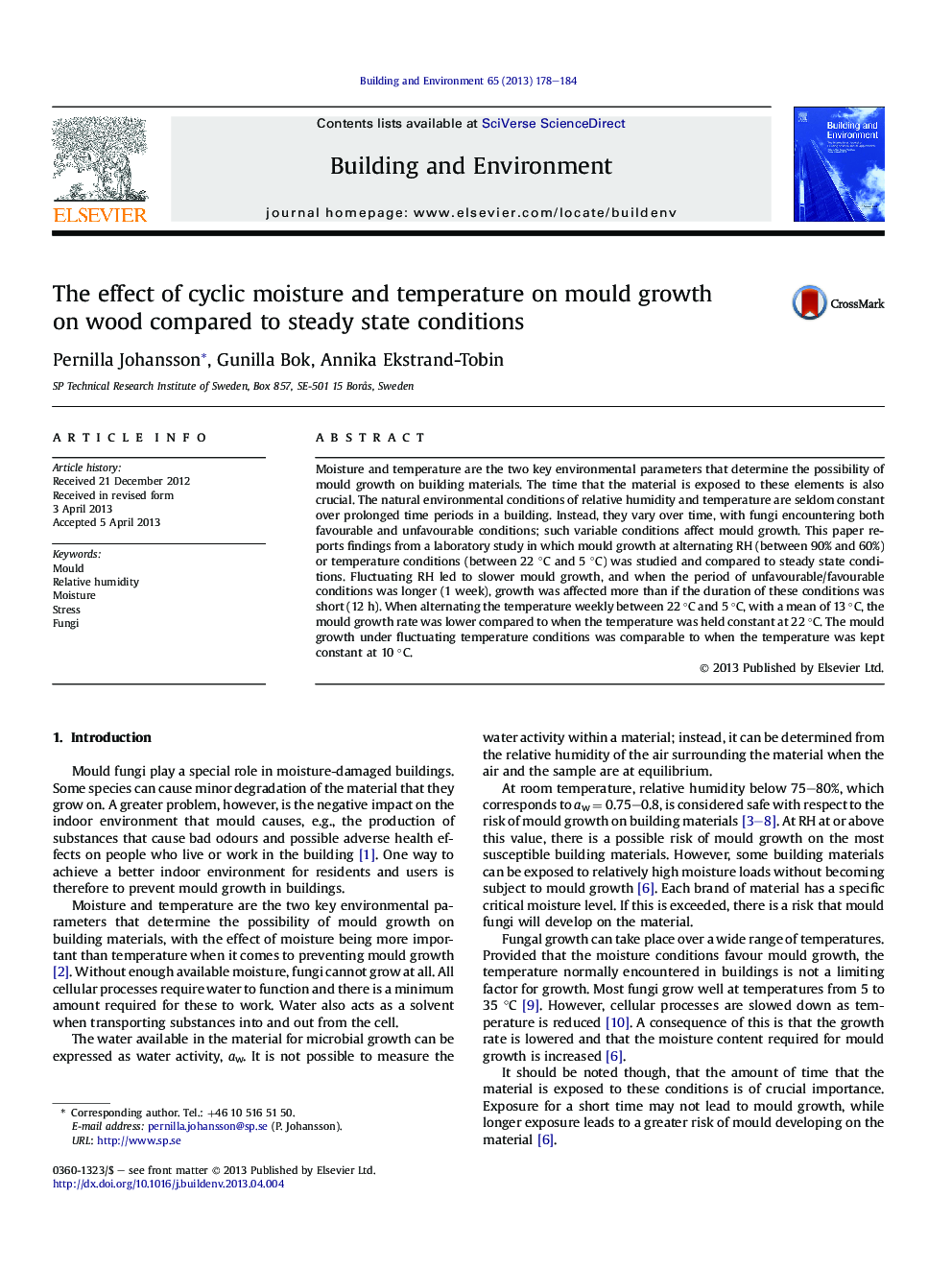| Article ID | Journal | Published Year | Pages | File Type |
|---|---|---|---|---|
| 6701047 | Building and Environment | 2013 | 7 Pages |
Abstract
Moisture and temperature are the two key environmental parameters that determine the possibility of mould growth on building materials. The time that the material is exposed to these elements is also crucial. The natural environmental conditions of relative humidity and temperature are seldom constant over prolonged time periods in a building. Instead, they vary over time, with fungi encountering both favourable and unfavourable conditions; such variable conditions affect mould growth. This paper reports findings from a laboratory study in which mould growth at alternating RH (between 90% and 60%) or temperature conditions (between 22 °C and 5 °C) was studied and compared to steady state conditions. Fluctuating RH led to slower mould growth, and when the period of unfavourable/favourable conditions was longer (1 week), growth was affected more than if the duration of these conditions was short (12 h). When alternating the temperature weekly between 22 °C and 5 °C, with a mean of 13 °C, the mould growth rate was lower compared to when the temperature was held constant at 22 °C. The mould growth under fluctuating temperature conditions was comparable to when the temperature was kept constant at 10 °C.
Related Topics
Physical Sciences and Engineering
Energy
Renewable Energy, Sustainability and the Environment
Authors
Pernilla Johansson, Gunilla Bok, Annika Ekstrand-Tobin,
